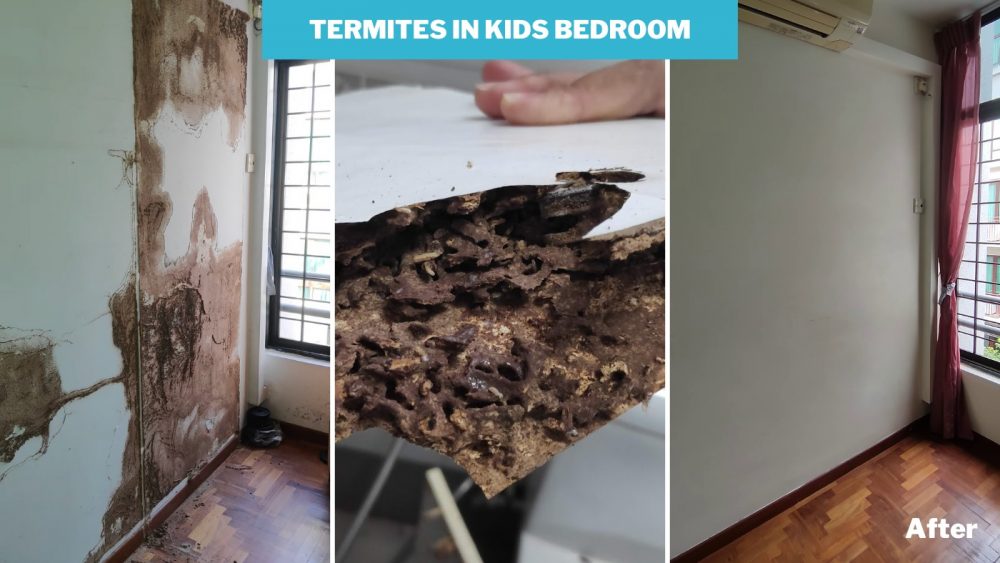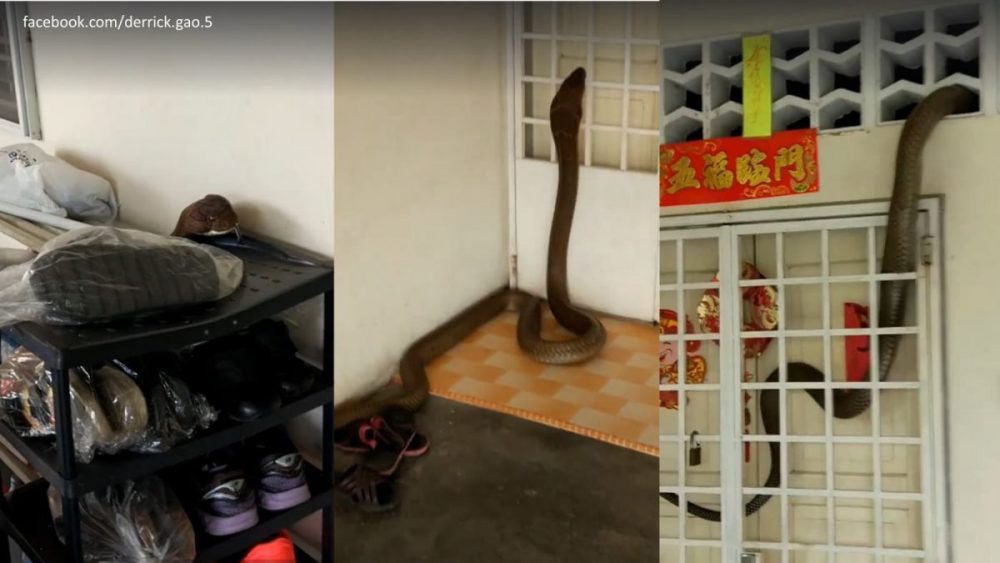This is an example of a termite infestation that went unnoticed for months. And when it was finally discovered, there was so much damage that the bookshelves had to be scrapped, and the walls had to be replastered.
Almost every kid’s bedroom has a wooden bookshelf where you keep your books and comics. This was the perfect “buffet” for a termite colony. And if you don’t peek behind the bookshelves once in a while, the infestation can grow and grow without you realising it.
In this case, our customer had two tall wooden bookshelves near the window. The parents noticed that the part of the bookshelf that rested the floor was starting to splinter. Instead of suspecting termites, they thought it was just damage from wet mopping that area all the time.
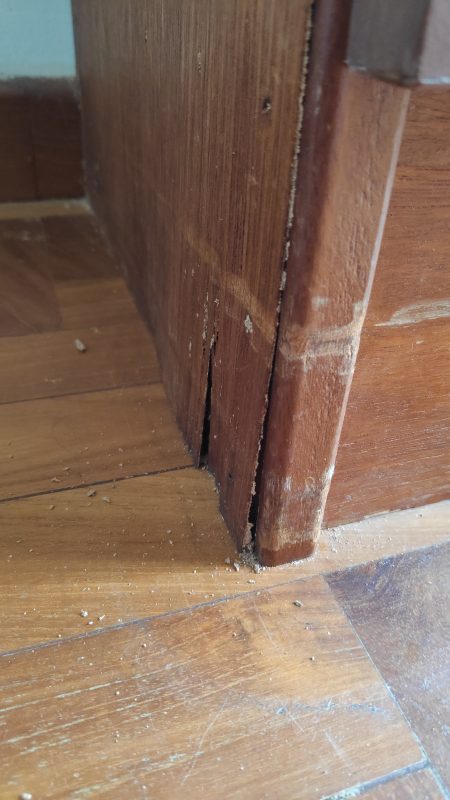
When the customer finally called our pest control specialists to check, we pulled the bookshelves away and found a shocker. The backs of the shelves were completely eaten away.
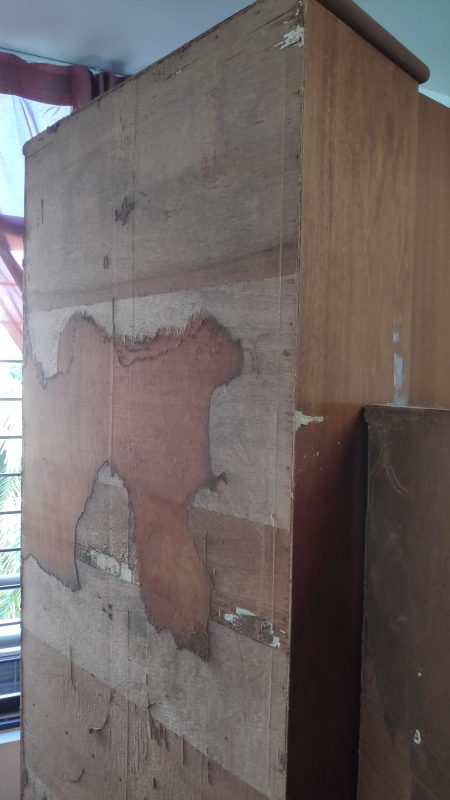
And the cement wall behind them? It was like a termite motorway, with tunnels and mud tubes everywhere. You could see termites wriggling out of the tubes and the wood, and falling on the floor. It was clear that the termites had been having a good time back there for a few months.
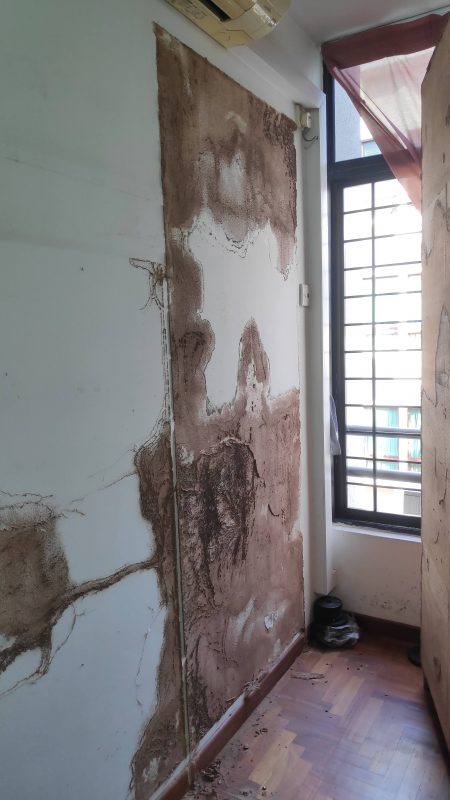
“We have to put the bookshelf back”
As a parent, your first instinct when you find creepy crawlies in your child’s bedroom, near where they sleep, is to empty a can of Ridsect all over the walls and cabinet. But that is a mistake.
“If you spray insecticide, you are just killing those termites that are in the room. But later, others will come from the nest.”
Pest control specialist, Recommend.my
“The nest is actually not here. It’s somewhere outside the room. Maybe in the garden, or under the house. You have to target the nest if you want to get rid of all the termites,” he added.
So, much to the parent’s dismay, we had to put the bookshelf back against the wall, and use the proven “baiting” method to kill termites.
The Baiting Method to Kill Termites
The baiting method is an approach to termite control that involves using bait stations to eliminate a termite colony. It works like this:
- Installation of Bait Stations: First, bait stations are installed around the perimeter of a home or near active termite infestations. These stations are typically placed in the ground but can also be installed inside the home where termite activity is evident. In this case, we installed the bait station on the bookshelf itself.
- Termite Bait: The stations are filled with bait that contains an active ingredient which is toxic to termites. It looks like a bag of white powder. And, this toxin doesn’t kill the termites immediately. Instead, it’s a slow-acting substance such as Hexaflumuron, which disrupts the termites’ ability to grow and develop. This means the worker termites have time to take the bait back to the nest.
- Spread: The termites that bring the bait back to share with the nest. This ensures the slow-acting poison is spread throughout the colony, reaching termites that never visited the bedroom, such as the queen.
- Monitoring and Replenishment: Depending on the scale of the infestation, the pest control professional will need to refill the bait, usually every two weeks. This is to ensure the bait is well distributed to the entire colony.
- Colony Elimination: Over time, the gradual decline in the colony’s population leads to its collapse.
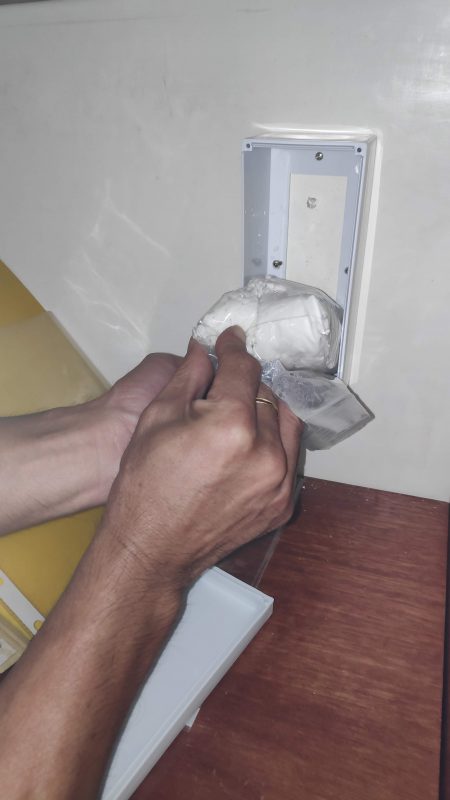
The baiting method is highly effective because it targets the entire termite colony, rather than just individual termites. It’s also considered more environmentally friendly and safer for use around homes, as it minimises the use of liquid pesticides, which can spread into the soil and water.
The Result
After a month and a half (and two rounds of refilling the bait), the activity around the bookshelf had pretty much stopped. Once we were confident that the nest was gone, we pulled back the bookshelves to inspect the damage in full.
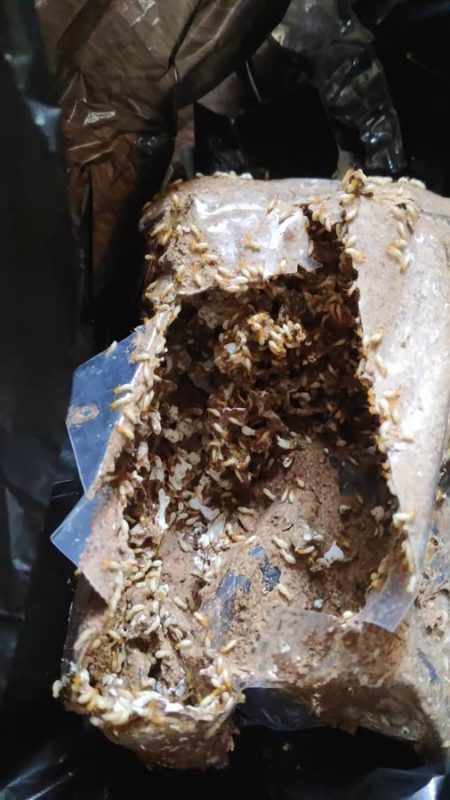
Unfortunately, the bookshelves were too badly damaged to be repaired. And, after we scraped off the mud tunnels from the walls, we found deep gouges in the plaster, which needed to be patched up. So, the job was handed over to our handymen, who helped to patch up and repaint the wall.
The bedroom was safe again for the little ones, and the parents were relieved.
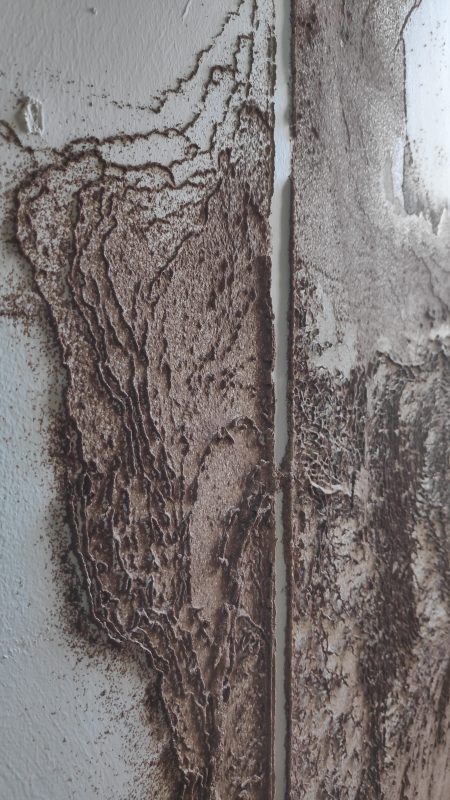
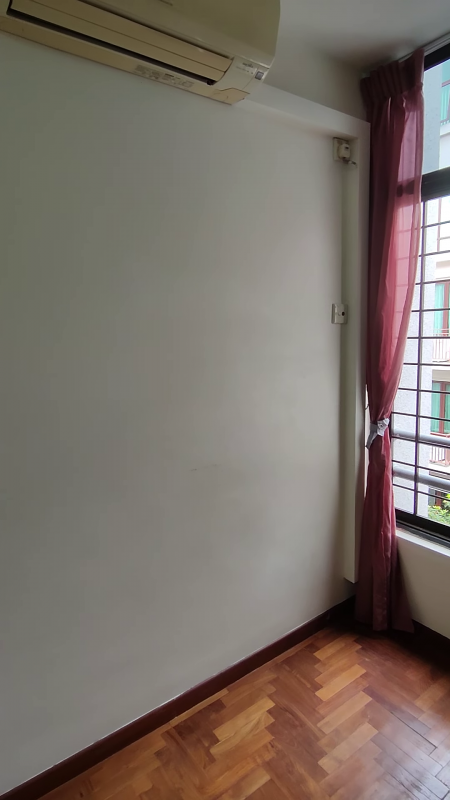
The Lesson: Don’t Wait
The amount of damage was bad, but it could have been much worse if the infestation was left even longer. So, if you don’t want to face your own termite disaster, this is what you can do:
- Look out for termite clues, such as hollow-sounding wood, discarded wings near windowsills, or mud tubes on walls. In our case, the backs of the bookshelves had been silently eaten away, revealing a hidden network of termite tunnels when we finally moved them
- Look out for termite droppings, also called “frass”. These look like little piles of sawdust
- Keep things dry. Fix leaks, and change out wet floor mats regularly (especially from the bathroom)
- Don’t stack newspapers or cardboard against walls
Need Help? Call the Pros
If you suspect you have a termite problem, or just want peace of mind, don’t hesitate to reach out to our professional pest control service at Recommend.my.
We can provide the expertise and treatment necessary to protect your home from termites. Remember, the sooner you act, the better your chances of preventing termite damage!


